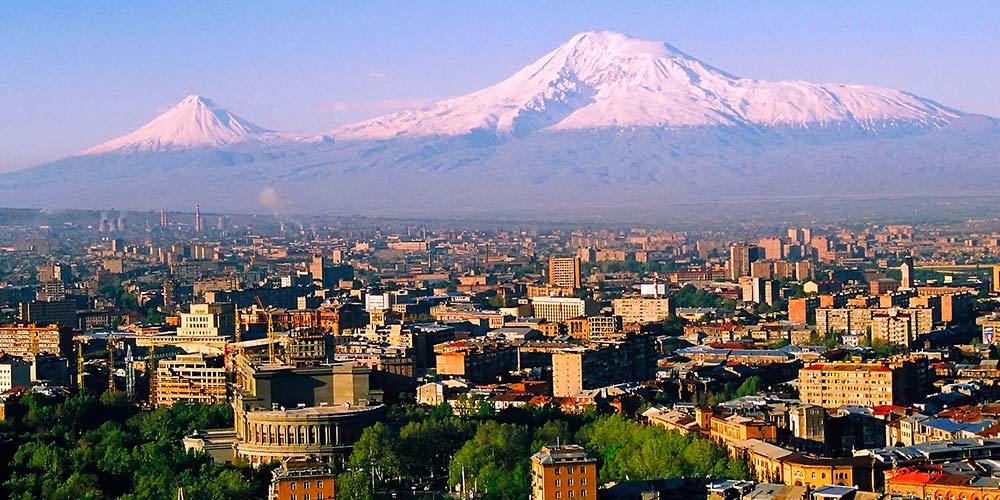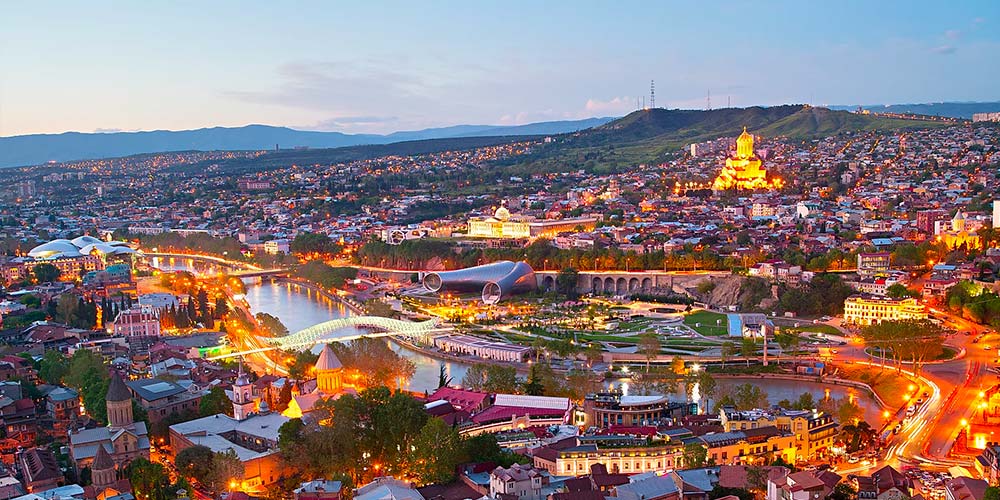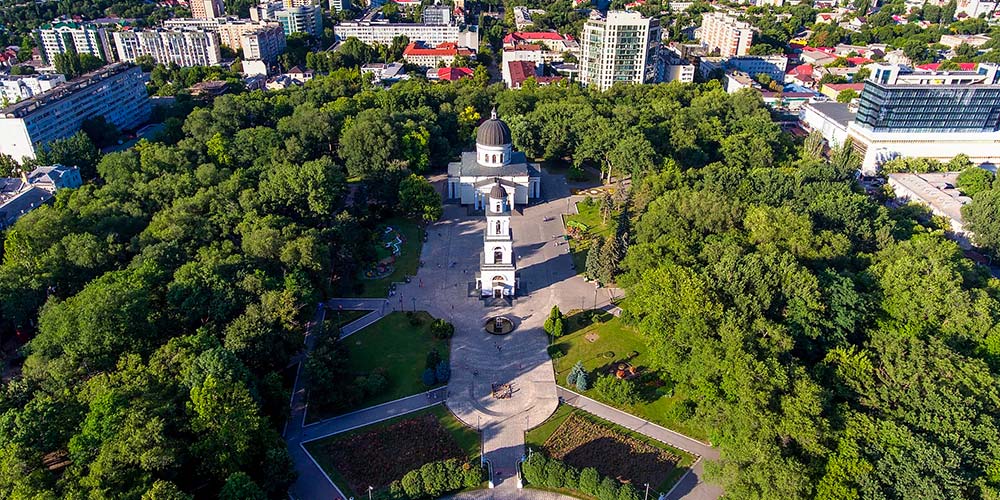EaPEC 2019
25-26 September 2019: Yerevan, Armenia
Hosted by IIAP NAS RA and ASNET-AM
EaPEC 2019 was held at the Matenadaran Museum, which is part of the Mesrop Mashtots Research Institute of Ancient Manuscripts in Yerevan, Armenia. It houses exhibitions that track Armenian culture from the creation of the Armenian alphabet in 405 AD to the present day. Where better to explore the conference theme “Connecting with Culture”? After all, research networks and other e-infrastructures do not only support ‘big science’, but also digital libraries and cultural heritage, Open Science and Machine Learning, humanities and the social sciences, and performing arts collaborations across borders.
Discover story

All videos can be found on our YouTube Playlist
View playlistRegistration, Coffee & Mingling
Welcome by the Conference co-chairs
See session videoWelcome by the European Commission
Hoa-Binh Adjemian, Head of Sector, DG NEAR
Welcome by Armenian dignitaries
Arayik Harutyunyan, Minister of Education, Science, Culture and Sport, Armenia
Armen Abroyan, Deputy Minister of High-Tech Industry, Armenia
Radik Martirosyan, President, NAS RA
Session chairs
Yuri ShoukourianCeremonial Cutting of the Anniversary Cake
Hoa-Binh Adjemian (DG NEAR)
Representative Armenian Government (Armenia)
Celebrating 10 years of the Eastern Partnership, 25 years of EaPEC 2019 host organisation ASNET-AM, plus 20 years of EaPConnect project partners RENAM and GRENA.
The cake can be enjoyed with a coffee break.
See session videoSession chairs
Erik Huizer, CEO GÉANTHumanity is facing several major issues, like shortage of energy, materials, and of food, ageing, climate change etc. We need all the creativity, brainpower and research in the world to solve these issues.
To make sure that researchers worldwide can build on each others’ ideas and results we need the appropriate network connections and collaboration services. To make sure we involve everyone in the world we need education with worldwide access to resources and to stimulate digital skills. Regional and National Research and Education Networks (NRENs) are in a unique position to make sure that all researchers, students and teachers can have access to the right network and services in their country and to the rest of the world. By facilitating collaboration and connectivity between researchers and students worldwide, NRENs boost the results of their efforts. This results in economic growth, a cooperative culture, new technologies and solutions for society.
See session videoSession chairs
Hrachya AstsatryanSpeakers
EaPConnect Project
The Eastern Partnership Connect (EaPConnect) project is in its 4th successful year, with the goal to bring scientific communities of the EaP countries closer to Europe, to improve network connectivity and to deliver high-quality innovative services for researchers and academics.
The presentation will set the scene for the EaPEC 2019 conference and give an update on the many achievements of the past years.
Advanced Computational, Data and Networking Services for the Research and Education Community in Armenia
As a cost-effective shared use of distributed electronic resources in Armenia, consisting of computational and data facilities interconnected by state-of-the-art network infrastructure, the ASNET-AM infrastructure is operated by the Institute for Informatics and Automation Problems of the National Academy of Sciences of the Republic of Armenia. This presentation gives an overview and, furthermore, highlights the cloud computing and data services, as well as the use cases and communities getting benefits from such services.
Session chairs
Léonie SchäferLunch
Cybersecurity issues today concern us all – both service providers and all users of these services. But in the countries of the Eastern Partnership there is an ambiguous perception of this concept, the term Information Security is often used, which includes cybersecurity, the rest, which probably refers to actions to protect users from dangerous content.
The existing definition of cybersecurity by ITU is based on the consensus of different points of view, which makes it difficult to use in everyday life. The most practical is the definition of ISO – ensuring the operability of cyberspace, which contains a new concept – cyberspace. The definition of cyberspace uses the concept of the Internet, through which computers and people communicate with each other and with each other, and the concept of content is not used here.
Is it possible to develop a cybersecurity landscape when this concept is not defined by law or does not coincide with internationally recognized definitions? Is it possible to combine measures to ensure the operability of cyberspace and measures to protect users from dangerous content? What tools are there to ensure cybersecurity – CERT / CSIRT, staff, population training, government regulation, others? Is it possible to create a state CERT (Computer Emergency Response Team) whose guidance is mandatory for all private and public sectors and structures recognized as critical infrastructures? What should CERTs be – managed from one centre, or are industry independent CERTs needed?
See session videoThe Copernicus project is Europe’s eyes on the world. This world-leading project provides scientists with the data they need to monitor climate change, pollution emission, crop growth, marine traffic, land use and urban development. Discover the reasons why earth observation, and Copernicus in particular, is vital to science today; and the ways in which the data can be accessed and how GÉANT and the NREN community is helping to contribute to this cutting-edge field and cornerstone EU project.
Data management and service provisioning at seismological data centres has evolved in the past decade, as the focus has shifted from the main challenge of acquiring high-quality seismic data in standard formats towards enhancing standard services to enable users in dealing with federated and big data challenges. Nowadays, the scientific community needs access to as much data as possible in the easiest possible way. In particular at GEOFON, a big part of our efforts of the last years was focused on building a federation, which provides a uniform interface across the different data centres. This is the spirit behind the European Integrated Data Archive (EIDA), the distributed data centre for ORFEUS (the European infrastructure for seismic waveform data in the European Plate Observing System, EPOS). Some of the challenges related to this federated approach have already been identified by other communities. Namely, the enormous growth of data and the globalisation and enlargement of the scientific community to new actors (e.g. citizen science). We will show in our presentation how local institutions / partners can benefit from our products and training initiatives.
See session videoCoffee Break
Mobile digital storytelling for cultural heritage and the myth of connectivity
Mobile digital storytelling has been recognized as a powerful tool to promote visitor engagement and reflection, fostering a deeper connection with cultural heritage. Personalisation and social interaction are design mechanisms that further enhance the user experience. However, the assumption of mobile connectivity at the majority of museums or open heritage sites, needed to deploy complex and dynamic technical solutions, has proven to be over-optimistic. This presentation focuses on the range of design approaches developed within the CHESS and EMOTIVE projects, discussing how these were shaped by the need to create stable solutions even in the presence of an unstable or non-existent network.
CLARIN
CLARIN is the Common Language Resources and Technology Infrastructure for the Humanities and Social Sciences. In my presentation I will
briefly explain what it is, how it works and what it does. The focus of CLARIN is on language and I will show how language plays a key role in many disciplines, even beyond the Humanities and Social Sciences, and how CLARIN aims at facilitating and supporting cross-language, cross-border and cross-discipline research. To conclude I will describe what we currently see as the main problems for our field.
Session chairs
Sergei KozlovToday the annual increase in data is measured in Zettabytes! The GÉANT network is evolving to deal with this exponential increase in data to support research and education… but what about the data itself? For most scientists, it’s just not possible to read all the relevant material published in their discipline. In some domains more relevant publications are being written in one year than a person could read in their lifetime. Many of the underlying data sets are not published and most of the data does not have the necessary metadata attached to it – meaning the data resulting from the majority of scientific studies cannot easily be found. In some sub-disciplines, the situation is relatively good, but even in those cases interoperability with other disciplines is usually not considered.
If relevant data would be findable, accessible and interoperable for scientists, these combinations could/would lead to (unforeseen) re-use and to a faster development of science. This is the aim of the European Open Science Cloud (EOSC). So that as a result of the right standardisation, data repositories with relevant data can be used by scientists and others to the benefit of mankind. In building EOSC, the aim is to design a ‘virtual commons’ where science producers and science consumers come together for more insights, new ideas and more innovation. A minimal viable platform with an official status consisting of rules of participation, a governance structure, FAIR data and interoperable services will be available to early adopters by the end of 2020, in short ‘Data made in Europe’. This presentation will give more information about the governance structure of EOSC, progress to date, and explain how science in EAP countries can benefit from EOSC.
Speakers
End of Day 1
Coffee & Mingling
This workshop will cover the most recent advances and trends in the applications of machine learning and artificial intelligence (AI).
Attend this workshop to learn how various AI methods and techniques can drive and accelerate new scientific discoveries in many diverse areas ranging from data center cooling issues, to cultural heritage and security systems.
The workshop will also explore further collaboration opportunities for the Eastern Partnership countries.
Session chairs
Olga PopcovaThis interactive workshop will explore
how the EaP region could use
Copernicus and other satellite data
in order to accelerate scientific research.
Some of the key concepts will first be introduced to the attendees. Then these concepts will be explored in the form of an ideas safari, with the delegates split into small groups. Each group would then focus on a particular issue or idea and then after a short period move to the next point. We then encourage the room to circle around those few points, contributing to each as they go. After which the groups present back on their board they have just been working on.
Session chairs
Olga PopcovaLunch
Humans vs Robots: should we produce systems smarter than we are?
Artificial Intelligence is without doubt a hot topic these days. However, along with wide-spread interest and curiosity, popularity also brings confusion and misunderstanding. The purpose of the ‘Ethics in AI’ panel is to engage and shed light on some of the myths around AI. More specifically, the panel will focus on the issues of training AI systems and the consequences for humankind of creating Artifical Intelligences.
We will start by discussing how humans train AIs. What does the process entail and how difficult is it. We will dive into the topic of intelligent systems. If machines are the product of human making, is it ever possible that machines could out-smart us? Under what conditions is it possible or likely? This opens up questions of training biases and stereotypes and the possibility of their transference during AI training. Another important consideration is whether AIs can self-train. What could AI systems learn on their own and how? Could (or should) humans impose limitations on the robotic learning systems? What kind of implications could this bring to the field of AI? And then, is it possible that as a result of training, humans will end up being managed by machines? How likely is it that we will live in the age of Terminator?
See session videoSession chairs
Tetiana PreobrazhenskaTo help promote the benefits of international- scale networking to researchers,the EaPConnect project collaborates with leading partners to create an exciting opportunity for EaP research communities.
The Enlighten Your Research for Eastern Partnership (EYR@EaP) organising committee consists of a number of partners from the European NREN community.
This edition of the EYR programme invited researchers and their collaborators to submit proposals that highlight how access to advanced networks, technologies and compute would significantly improve their research and discovery process.
See session videoSpeakers
Lightning talks are great ways for EaPEC participants to share early results, get feedback on shared ideas, find new collaborators from other institutions, and spark conference discussion.
See session videoCoffee-break & Posters
This presentation will include an overview of EU research and innovation programmes and explore participation support structures in Armenia. Relevant open calls within Horizon 2020 will be discussed as well as other opportunities.
See session videoSession chairs
Artur BinczewskiSpeakers
Session chairs
Olga PopcovaEnd of day 2
Museum Tour
Speakers
Impressions of the conference

test

Test test

Copyright tekst

Copyright tekst

Copyright tekst
Enlighten your Research
Fourteen projct proposals were submitted for the 2019 EaPConnect Enlighten Your Research programme. Seven winning projects were announced during EaPEC 2019.
